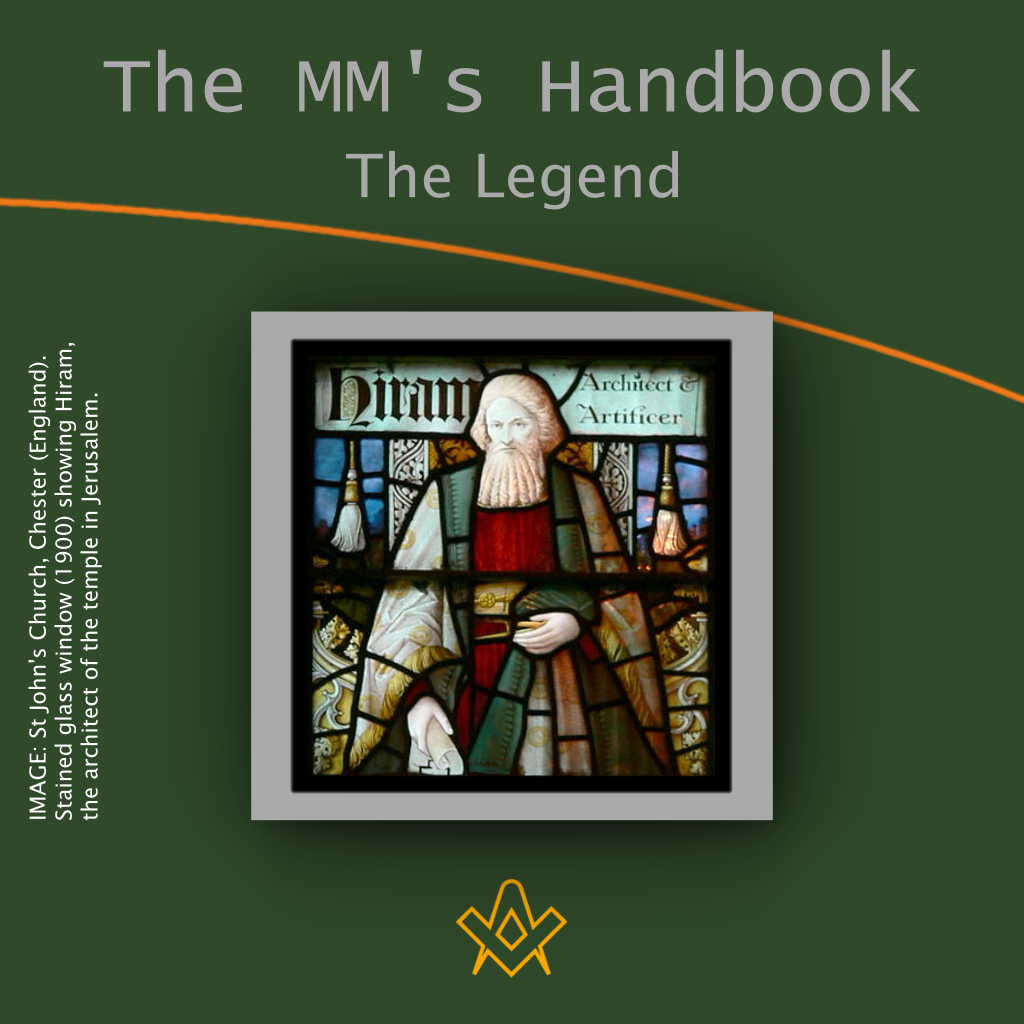After the ceremonial investiture of the Candidate the W.M. continues the narrative of the traditional history.
At least this is the case in most English workings, but in some Scotch workings the whole story is told first, and subsequently the Candidate and the other brethren act the chief parts. Perhaps one of the most important points to realise is the correct meaning of the name Hiram Abiff.
Chapter VII – The Legend
Major Sanderson in An Examination of the Masonic Ritual gives the following interesting interpretations, which we will proceed to expand further –
“The title Haram Abiff is taken direct from the Hebrew of 2 Chron., Chapter 4, verse 16., and means, ` Haram His father.’
Haram means ‘Exaltation of light, their liberty or whiteness, he that destroys’; It is of interest to note that abib in Hebrew means `Ears of corn,’ or `Green fruits,’ and there is just a possibility that this is the correct title of Haram”.
Bearing these translations in mind we at once perceive a whole series of inner meanings hidden in the name of the principal Architect. Taking the Christian interpretation of our rituals:-
firstly, we shall remember that Christ said “If I am raised up (or exalted) I shall draw all men unto me”.
Secondly, Christ died to make us free, that is, to give us liberty from the bonds of death and hell.
Thirdly, mediaeval divines were never tired of referring to Christ’s whiteness and purity, and relate many beautiful legends and allegories to drive home this lesson. One phrase alone will suffice to bring this aspect of the Christ to our minds, i.e. , that He is constantly spoken of as “the lily of the valley”.
Fourthly, He came to destroy the bonds of death and hell, nor must we forget the old prophecy spoken concerning the coming Christ and the serpent, representing Satan,“
It (Christ) shall bruise thy head, and thou shalt bruise His heel, “Gen. 3. v. 15. It is of interest to note that Quetzacoatl, the Mexican Preserver, who fought and overthrew the great giant of evil, was himself smitten in the foot, near to a fall of water, subsequently died from the wound, and ultimately rose again from the grave.
In India Krishna similarly died from an arrow wound in the heel. Moreover, in mediaeval frescoes Christ is constantly represented as crushing the head of the great dragon under His left foot, while in His right hand He upraises a staff on which is a cross. Such scenes are usually described as “The Harrowing of Hell”.
Fifthly, if the word abib is the correct rendering for the second half of the name in question, we get a clear reference to the Sacramental bread.
The ears of corn are obviously synonymous with the wafer or consecrated bread, which in mediaeval days alone was given to the laity: while the alternative translation, “Green Fruits,“ brings to our mind the Biblical saying that Christ is “the first fruits of them that slept“ (1 Corin, 15. 20).
Bearing this possible Christian interpretation in mind, installed masters will perceive the deep significance of the password which leads from the degree of Master Mason to that of Installed Master.
But in addition to these Christian interpretations of Haram Abiff there was yet another, which in some senses may be regarded as older, and the key to which is supplied by India.
In this sense Haram Abiff takes on the characteristics of Shiva, the Destroyer.
Firstly, “Exaltation of life “reminds us of the legend that Shiva on a certain day increased in stature until He overtopped the universe, and, as a result, overthrew Brahma, the Creator, and was acknowledged by Vishnu as His superior.
On that great day He gathered unto Himself the beginning and the end of all things, Alpha and Omega, and henceforth birth and death alike were in His hands.
Secondly, “Their liberty “refers to the fact that, to the pious Hindu, Shiva by death grants liberty from the toil and anguish of this world, and sets the soul free to mount to greater heights of spirituality.
Thirdly, Shiva is always spoken of as the “Great White God, white with the ashes of the dead who are ever burned in His honour”. Nor must we forget that these ashes are always scattered to the four cardinal points of Heaven.
Fourthly, He is in His very essence “The Great Destroyer”.
The “Ears of corn “are symbols of Vishnu the Preserver, Who Himself, according to numerous Hindu legends, was slain and rose from the dead, thereby paying allegiance to the Lord of Death ; and so:
Fifthly, we obtain the idea of the Resurrection as symbolised by the ears of corn, which are planted in the earth and bring forth an abundant harvest, the “Green fruits “of the fields.
In this connection it is as well to remember that the central theme of the Eleusinian Mysteries was the ear of corn which was shown to the Candidate at the most solemn point of the whole ceremony, and similarly taught the doctrine of the resurrection from the dead.
The next point that strikes us in the legend is the number of craftsmen who “went in search”. The Irish version is of peculiar interest, for it relates that it was the twelve who relented who afterwards “went in search, “and not a new company of fifteen.
In many ways this is more logical, and certainly has a deep symbolic meaning.
It is logical in that it shows that the penitent twelve did their best to make amends for ever having allowed themselves to listen to the wicked schemes of the other three, and the subsequent decree of King Solomon, ordering them to wear white gloves and white aprons as a mark of their innocence, is most appropriate.
It was a public announcement that King Solomon forgave them their indiscretion and acquitted them of responsibility for the crime.
On the other hand, in our version there seems no logical reason why King Solomon should order an entirely new batch of fellowcraft’s to wear these emblems of their innocence, since they clearly had nothing to do with the crime, and moreover, all the others, except the penitent twelve, were equally innocent, and should therefore likewise have been instructed to wear white gloves and aprons.
It must be remembered that these white gloves, etc., were not bestowed as a reward for having taken part in the search, but are specifically stated to have been ordered to be worn to denote innocence.
The Irish account goes on to state that the twelve set out from the Temple and went together in one company until they came to a place where four roads met, and formed a cross; then they divided into four companies, and three went North, three East, three South, and three West. Thus they trod the Way of the Cross.
In some old Irish workings we are told that the three who went North never returned. This symbolically implies that they went into the Place of Darkness.
As the tendency in modern Irish masonry appears to be to adjust its ritual in main essentials to our English workings, it is but fair that I should say that I have a tangible proof of this form of legend, in the shape of an old Irish apron dated 1790, which, unlike modern Irish aprons, has a number of paintings on it depicting incidents in the ritual.
One of the paintings shows the twelve fellowcraft’s separating at the four cross roads. (See frontispiece).
It is clear from all accounts, whether English, Irish, Scotch or American, that the scoundrels, the agents of death, were found by those who went in the direction of Joppa, that is in the west, but we are left in considerable doubt as to whether the body was found in the east or in the south.
Symbolically, however, it would clearly be in the south, for Hiram Abiff, like the Christ, was struck down at High Twelve, when the sun is in the south.
From a practical point of view it is fairly obvious that the scoundrels who were carrying away the body could never have reached Joppa if they had once gone east, for they would have had to fetch half a circle round Jerusalem, a procedure which would have rendered their chance of escape almost hopeless.
By going south they might hope to throw their pursuers off the track, and then turn back at an angle, reach Joppa, and escape by boat. That this was their intention is clear from many old forms of the legend, and especially in those worked in America.
King Solomon, however, foresaw this possibility and prevented their escape by forbidding any ships to sail.
In the American working one of the officers of the Lodge enacts the part of a sea captain, and even wears a yachtsman’s cap. The villains come to him and beg him to take them aboard, but he refused because of the embargo ordered by King Solomon.
That the same incident was known in the old Irish working is shown by the little picture on the same Irish apron depicting the arrest of the villains on the seashore, for in the background there is a ship.
Let us interpret the meaning of the Irish working first. From the Christian standpoint the twelve Fellowcrafts represent the twelve apostles, Mathias replacing the traitor Judas.
But in the non-Christian, and possibly earlier interpretation, these twelve would of course be the twelve signs of the Zodiac, searching for the sun which had been eclipsed.
We must never forget that in addition to the deep spiritual meaning hidden in our ritual there is also a Solar Myth embedded, which has in the course of years become allegorized and filled with deeper spiritual truths.
But being English masons we must be prepared to find an explanation of the fifteen. In ancient Egyptian times the month consisted of 30 days, and the year of twelve such months, plus five extra days.
Now the first fifteen, of whom twelve recanted, presumably represent the first half of that month, while the second half of the month is represented by the fifteen who went in search.
But spiritually the meaning of the fifteen is fairly clear. Man has five senses and is triune in nature, and thus implies that Body, Soul and Spirit must cooperate in trying to find God, and employ on that quest their five senses.
Lest there be any misapprehension here I would explain that man is considered to have not only the five physical senses, but also corresponding senses of Soul and Spirit.
The phrase “To see with the eyes of the Spirit “is perfectly well known, and similarly we can speak of the eyes of the Soul.
To give concrete examples – Students of psychic science constantly speak of clairaudience and clairvoyance.
While it is not necessary to accept this type of phenomena, it is clearly obvious that if man survives death at all his Soul must have a means of communicating with other Souls and that these correspond in some way to our physical senses.
In like manner how are we to describe the visions of the great seers and prophets, related in the Bible, except by the possession of spiritual sight ?
Bearing this in mind, we obtain the following interpretation of the fate which befell the three fellowcraft Lodges into which the fifteen formed themselves.
Those who found nothing represent the physical senses of man, which are useless beyond the grave: the next company must therefore represent the Soul, for despite the logic of the physical world, it is the Soul which realises that death does not end all, and so it was one of these who raised the Master.
But the power which tells us what is right and wrong, and which ultimately punishes us for our offences, is what we call conscience, and thus assuredly is the Divine Spark within us-the Spirit.
Let us now turn to consider the details connected with the discovery of the body.
The incident of the shrub is such a striking analogy with a similar one found in Æneid, wherein Æneas finds the body of the murdered Polydorus by plucking up a shrub which is near him on the side of a hill, that some students suggest that in the revision of our ritual this incident was copied from Virgil.
But, in Who was Hiram Abiff, I show that both refer back to an ancient source and have an allegorical meaning.
One proof supporting this view; is that this particular tree, the Acacia, has from time immemorial been more or less sacred in the near East.
In ancient Egypt the earliest forms of the legend of Osiris relate that it was an acacia which grew up round the coffin of Osiris, and not a tamarisk as in the later versions. (See An Examination of the Masonic Ritual, by Major Sanderson).
In like manner this tree is sacred in Arabia, India, and many parts of Africa, while it is the Shittim wood of the Old Testament, from which the ark was made. No doubt in this reverence for the acacia we have a survival of the primitive veneration for trees, usually spoken of as “tree and serpent worship”.
In India the assouata tree is stated to be a symbol of Trimurti, The Three in One. Its roots represent Brahma, its trunk Vishnu, and its branches Shiva, the Destroyer.
At any rate we can regard the acacia tree as in itself an emblem of the resurrection, for the tiny seed, which is buried brings forth a mighty tree, covered with fragrant blossoms.
The account of the manner in which the Casual Signs came into existence, though ingenious, can hardly be taken as historic.
As we have already dealt with this point previously, we shall only say that every folk-lore student is well aware that, in the vast majority of cases, legends purporting to explain the origin of a certain custom do not give the real origin at all, but merely indicate that the origin of the custom has been lost, owing to its great antiquity.
The very manner in which some of the signs are given is sufficient to indicate that they did not originate in the way suggested, while, on the other hand, we find these same signs all round the world, with entirely different explanations as to their origin.
They are indeed ancient landmarks, and the utmost care should be taken not to alter them in any way.
The next incident in the legend is the capture of the scoundrels. In some rituals it is given with much interesting detail of a picturesque nature.
All agree that they were apprehended in a tavern, and many say explicitly that it was near the sea shore.
Some of the rituals state that the fugitives were overheard lamenting as follows:-
One said, ‘Oh, that my throat had been cut across rather than I should have done it;’ while another more sorrowfully exclaimed, `Oh, that my hart had been torn out. rather than that I should have struck him;’ and a third voice brokenly said, `Oh, that my body had been severed in two rather than that I should have smitten him,’
This last version is of interest as explaining the legendary origin of the penetly of the three degrees, and incidentally it shows how legend incorporates facts into a story, in order to explain something whose original meaning is lost.
It would also appear from this version as if the scoundrels had not intended to actually kill their victim but merely to terrorise him, and in the excitement of the moment lost their heads.
Symbolically this contains a valuable piece of teaching. According to one interpretation the three scoundrels represent “The lust of the flesh, and the lust of the eyes, and the pride of life “(1 John, 2. 16).
In other words, the sins of the flesh, the sins of the Soul, such as covetousness, and spiritual pride, the most deadly of all.
These sins assuredly destroy man both physically and spiritually, yet it can truly be said that in giving way to them no man intends to destroy himself. From the more strictly Christian standpoint the three scoundrels are Herod, Caiaphas, and Pontius Pilate, and it is perfectly clear that Pilate and Herod, at any rate, did not wish to kill our Lord; but were caught in a position from which they found it impossible to escape.
Returning to the deeper mystical interpretation we notice that the scoundrels were found in the West, the region of Death, which teaches us that the just retribution for all our sins, whether of body, soul, or spirit, will overtake us after death, and that though in one sense it is God, here shadowed forth by King Solomon, who punishes, yet in another sense it is our five spiritual faculties which themselves rise up in judgment against us. We ourselves, doom ourselves, and therefore we can obtain nothing but strict justice.
Without pretending that we have exhausted this subject, this brief explanation of the true character of the scoundrels and their captors must suffice, and we will only mention in passing that here also there appears to be a half forgotten astrological reference to the three winter months which oppress the sun.
Article by: J. S. M. Ward
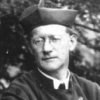
John Sebastian Marlow Ward (22 December 1885 – 1949) was an English author who published widely on the subject of Freemasonry and esotericism.
He was born in what is now Belize. In 1908 he graduated from the University of Cambridge with honours in history, following in the footsteps of his father, Herbert Ward who had also studied in history before entering the priesthood in the Anglican Church, as his father had done before him.
John Ward became a prolific and sometimes controversial writer on a wide variety of topics. He made contributions to the history of Freemasonry and other secret societies.
He was also a psychic medium or spiritualist, a prominent churchman and is still seen by some as a mystic and modern-day prophet.
Recent Articles: J.S.M Ward series

Book Review - The EA, FC, MM Handbooks
Essential reading for every Entered Apprentice, Fellowcraft, and Master Mason - these seminal books by J.S.M Ward are what every Mason needs!
more....
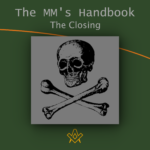 Chapters 9 & 10 The Closing Finally, even if a man can never fathom the full meaning of the third degree, yet there is no man worthy of the name who has passed through that third degree but will certainly have learnt one important lesson, namely, how to die, and thereby will be the better man. |
 Chapter 8 - The Tracing Board - The next part of the narrative is incorporated in most English workings with the Tracing Board. The most interesting feature is the description of the grave. It is obvious that peculiar stress is laid on the centre, even in the present form of our ritual, because of the way in which the measurements are given. |
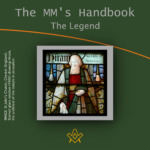 The Master Mason's Handbook P7 Chapter 7 - The Legend - After the ceremonial investiture of the Candidate the W.M. continues the narrative of the traditional history. At least this is the case in most English workings, but in some Scotch workings the whole story is told first, and subsequently the Candidate and the other brethren act the chief parts. Perhaps one of the most important points to realise is the correct meaning of the name Hiram Abiff . |
 The Master Mason's Handbook P6 Chapter 6 - The Badge - On his re-entering the Lodge, the candidate is presented and in due course invested with the badge of a Master Mason by the S.W. The Badge itself, however, is full of symbolic meaning…. |
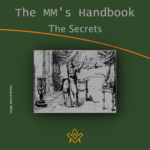 The Master Mason's Handbook P5 Chapter 5 - The Secrets. Having thus been brought into the place of light the Candidate is given not the genuine secrets, but only substituted ones. This fact must often have puzzled the Candidate. The practical reason given in the ritual, though perfectly intelligible to a Royal Arch mason (Companion) , cannot be the real one. |
 The Master Mason's Handbook P4 Chapter 4 - The Exhortation The opening part of the exhortation gives a convenient summary of the previous degrees and quite clearly indicates that the first inner meaning of the series is Birth, Life which is of course educational and preparatory for its sequel, and Death. |
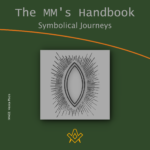 The Master Mason's Handbook P3 Chapter 3 - The Symbolical Journeys; We have seen in the previous books that the square and compasses are united on the pedestal in such a way as to form the Vesica Piscis, the emblem of the female principle, and the symbol of birth and rebirth. Hence symbolically the Candidate passes through the Vesica Piscis. |
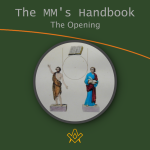 The Master Mason's Handbook P2 Chapter 2 - The Opening; a brief explanation of the teaching of the third degree as contained in the symbols by J.S.M Ward |
 The Master Mason's Handbook P1 Chapter 1 - Questions and Password; a brief explanation of the teaching of the third degree as contained in the symbols by J.S.M Ward |
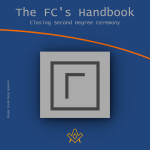 Chapter 6 - Closing Second Degree Ceremony; a brief explanation of the teaching of the second degree as contained in the symbols in the closing part of the ceremony by J.S.M Ward |
 Chapter 5 - The Second Degree Tracing Board; a brief explanation of the teaching of the second degree as contained in the picture of the tracing board according to the ancient mysteries by J.S.M Ward |
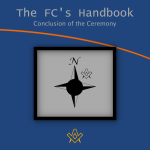 Chapter 4 - Conclusion of the Ceremony; a brief explanation of the North East Corner and the Charge according to the ancient mysteries by J.S.M Ward |
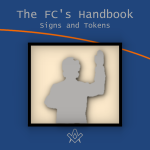 Chapter 3 - The signs and tokens; an explanation of the signs and tokens symbolism of the fellowcraft according to the ancient mysteries by J.S.M Ward |
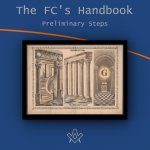 Chapter 2 - Preliminary Steps an explanation of the perambulation and advancement to the east by the winding staircase by J.S.M Ward |
 Chapter 1 - Preparation, past word and opening ceremony - The questions which are put to the candidate are really a test of the lectures, which today, unfortunately, are hardly ever given in open Lodge. |
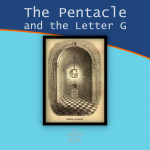 In the centre of the ceiling in every well-decorated Lodge room there should be a pentacle having within it the letter 'G'. |
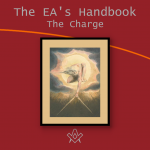 The Entered Apprentices Handbook P7 Chapter 7 - The candidate receives the charge, the first significant point is the phrase "Ancient, no doubt it is, as having subsisted from time immemorial". |
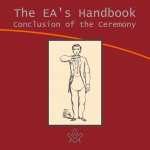 The Entered Apprentices Handbook P6 Chapter 6 - Having taken the first regular step the Candidate is given the Sign. This he is told refers to the Penalty of his Obligation, and no doubt it does, but it also seems to refer to something much more startling. |
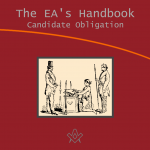 The Entered Apprentices Handbook P5 Chapter 5 - In all the ancient mysteries a candidate obligation was exacted to secure the secret teachings given in these mysteries which disclosed an inner meaning. |
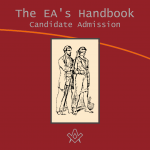 The Entered Apprentices Handbook P4 Chapter 4 - The candidate's admission into the lodge, is received on a sharp instrument. This signifies many things, one idea lying within the other. |
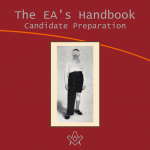 The Entered Apprentices Handbook P3 Chapter 3 - the Candidate being prepared by the Tyler. What we now have is a system by which the parts which have to be bare are made bare. |
 The Entered Apprentices Handbook P2 Chapter 2 - The Tyler or Outer Guard. The first thing that greets the eyes of the aspirant to our Order standing in front of the door with a drawn sword in his hand. |
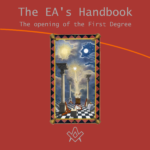 The Entered Apprentices Handbook P1 Chapter 1 - An interpretation of the first degree, the meaning of the preparation, symbolism, ritual and signs. Chapter 1, The opening of the First Degree |
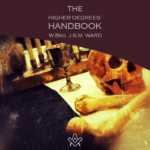 Brief historical overview; Extract from The Higher Degrees ' Handbook by JSM Ward |
masonic knowledge
to be a better citizen of the world
share the square with two brothers

click image to open email app on mobile device



